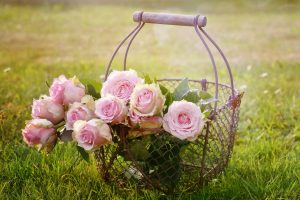If you’re a proficient gardener, then you may have experienced blooming shrubs without flowers during the growing season. It happens, but it is nothing to really worry about. There are reasons why this may be occurring. That’s because there are a number of factors that effect if a shrub blooms. To narrow it down to the particular reason why your shrub isn’t blooming you will need to do a little research. There are clues that point you into the right direction.
Your initial research should involve what the botanical name of your shrub in question is. This will help you pinpoint any problems and then you can do the necessary research of what to do about it.
It is advised that you keep the plant tag as well as any other pertinent information about your shrubs when you buy them.
The reasons why flowering shrubs aren’t blooming include:
- The shrub is in the wrong location.
- The shrub is under stress.
- Whether the shrub blooms on old or new wood.
- Whether the shrub needs to be revived.
- Whether the shrub is dioecious.
- Whether the shrub has been transplanted.
- What was the weather like in the early spring?
- The fertilizer you use.
Flowering Shrubs Are In The Wrong Location
Shrubs that require full, direct sunlight won’t bloom well if planted in shade. If you haven’t experienced the problem before, then it is possible that the shrub received sufficient sunlight in the past, but now its location has become to shady. That can be due to a structure that has been constructed that blocks the sun, it can be due to growing plants that have become so dense that the sun is blocked from reach the shrub, etc.
Of course, to remedy the situation, move the shrub to an area of your garden or your property that gets full sunlight.
Flowering Shrubs Are Under Stress
If your shrub is in soil that is too wet or dry, there is not enough sun, it has disease or insect damage, it’s planted too deep in the soil, or there is too much mulch, or it needs, doesn’t have enough or the wrong fertilizer is being used, then it may be suffering stress.
Determine the issue that is causing the stress and eliminate it.
Flowering Shrubs Bloom On Old Or New Wood
If the shrub commonly blooms in the spring between April and June, then it probably flowers on “old wood.” Old wood is the stem that was part of the shrub the previous year. The stems may look dead in the early spring. However, they are actually hosting this year’s buds. If you prune them in the fall or early spring, then you are cutting off the bloom. Although a problem for many shrubs, it is especially an issue for Hydrangeas, Lilacs, Forsythia, Azaleas, and Rhododendrons.
To avoid the problem, prune spring blooming shrubs immediately after flowering. Trim them for height or shape and cut out a little of the oldest stems. Cut the old stems off at ground level. Do a couple of stems each year and new, fresh stems will sprout assuring that the plant looks young and vibrant.
Does The Flowering Shrubs Need To Be Revived?
If a shrub lives for many years and is not maintained, it will become very unattractive and stop blooming. It’s advised that you cut the entire shrub down about 6-inches to 12-inches. This will encourage it to grow fresh new stems and renew its vigorous bloom. Do the pruning in February or March while the plant is still dormant. Be aware that if you do this you may sacrifice the bloom for one year depending on the type of shrub.

Is The Shrub Dioecious?
Most plants commonly have male and female parts. Before a flower can be formed, the male pollen must reach the female ovum. Pollinators typically do this. However, some shrubs are dioecious, which means they are either male or female. The most common example of a dioecious shrub is the Holly. To get berries on the female plant you must plant a male plant nearby. It can’t be just any male shrub; it must be one that is in blooming sync with the particular female shrub you are “mating” to it.
Was The Shrub Transplanted?
When planting a shrub from one location to another, a good portion of root is damaged and will require time to reconstruct. How much time depends on the amount of the damage and the species of the shrub. It may take some larger shrubs as long as a couple of years before it will bloom again. Moreover, a young shrub started via seed or a cutting can’t take a few years before it shows blooms.
What Was The Weather Like In Early Spring?
Typically, the warm up period during which shrubs begin to bud is in February and March. This is usually adversely affected by the freezing weather that can occur in April. As a result, the new buds are frozen, destroying any chance that the shrub will bloom. This can be an issue with such shrubs as Hydrangea, Magnolia, and Camellia.
The Fertilizer You Use
Fertilizer can be the source of flowering issues. Your shrub may not be blooming because the fertilizer you’re using lacks phosphorus, or it has too much nitrogen. If you fertilize your lawn with nitrogen and your shrub is planted at the edge of the garden next to the lawn, then that nitrogen will affect the shrub and cause it to develop a lot of leaves, but no blooms.
It is advised that you perform a soil test before applying fertilizer to anything. You may discover that you don’t need fertilizer at all and adding it can negatively affect blooming.
(Source: emmitsburg.net)






